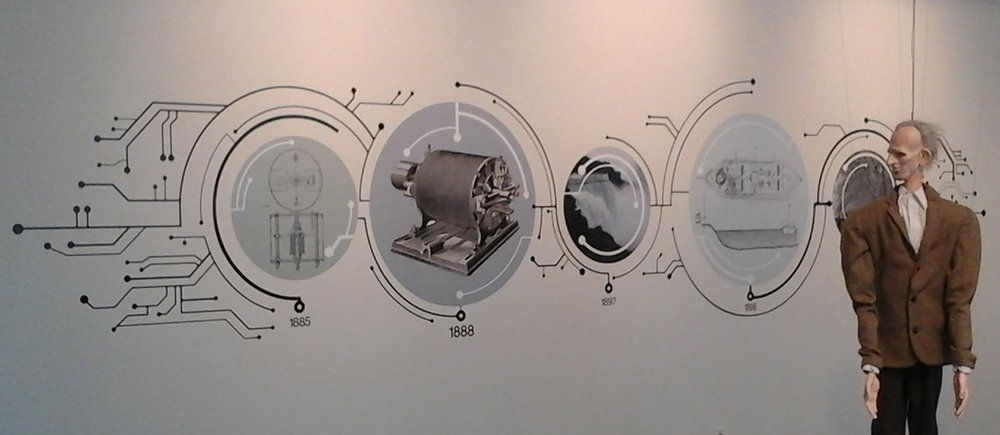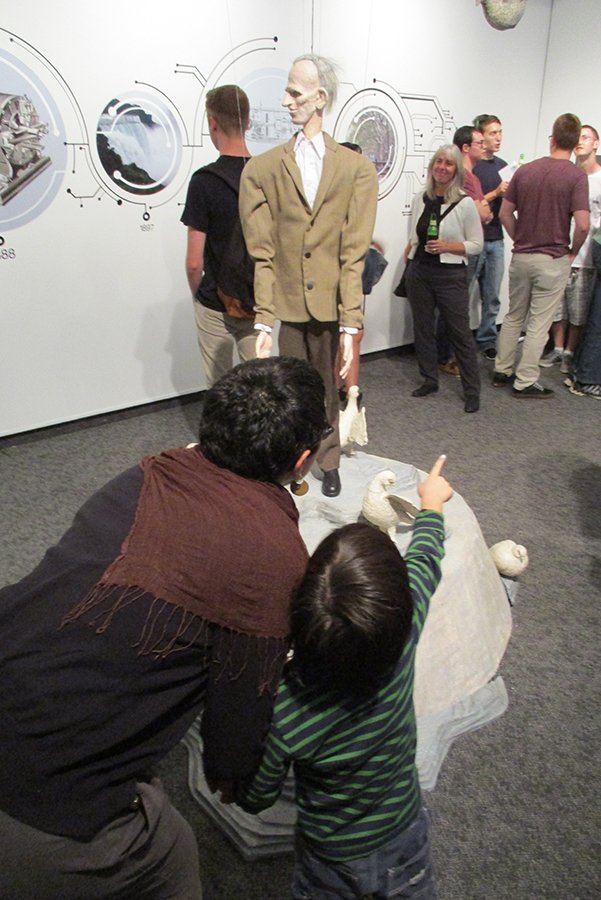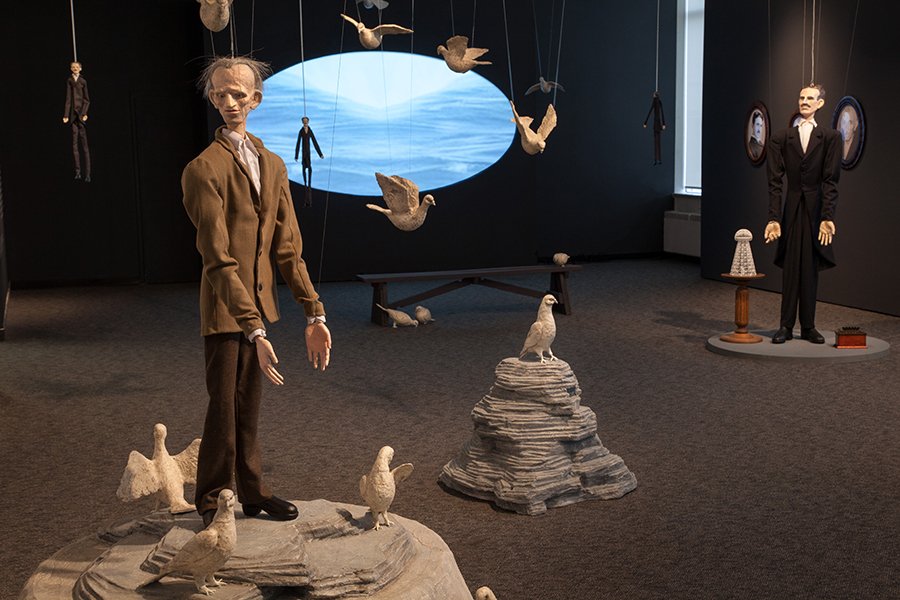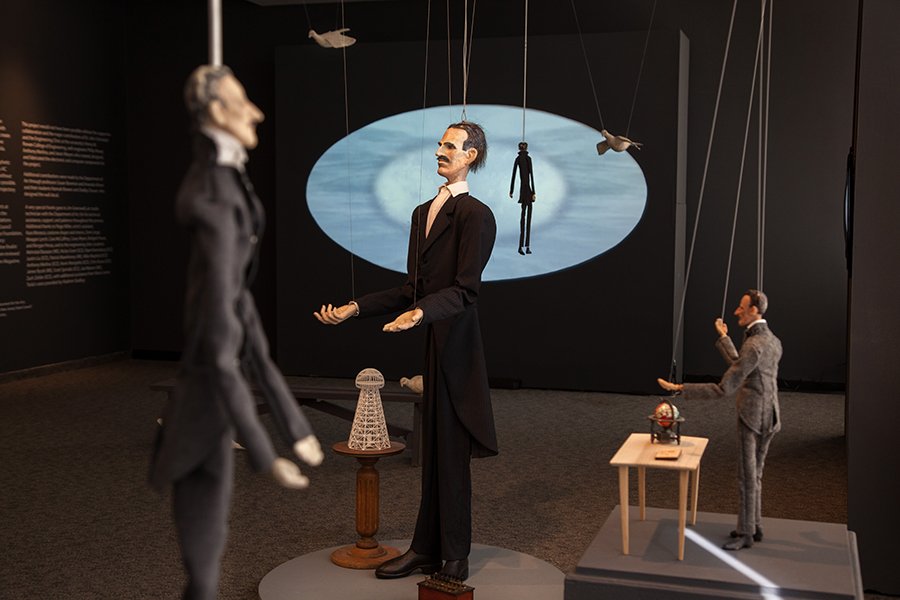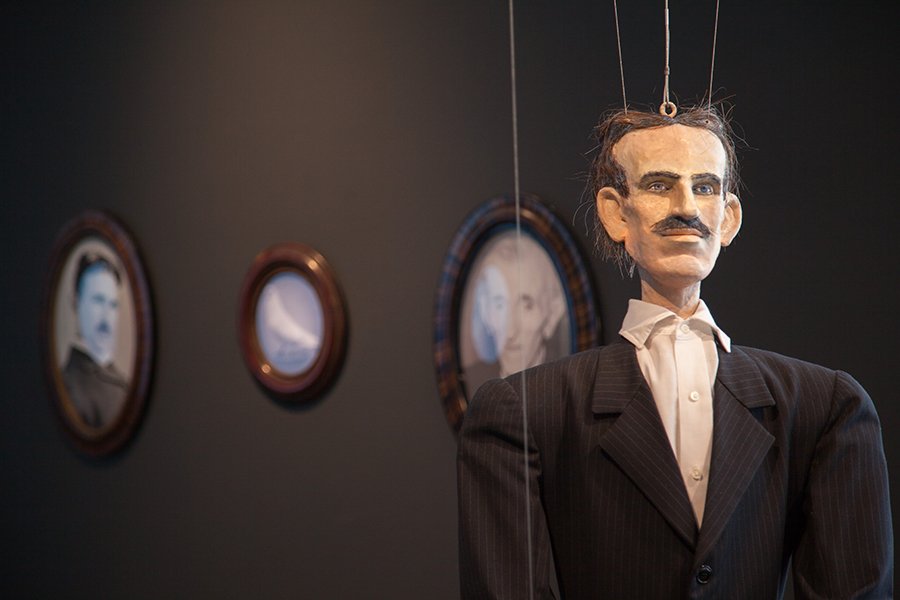Jeanne Jaffe: Elegy for Tesla
Jeanne Jaffe: Elegy for Tesla
Elegy for Tesla
On display from September 13, 2015 - January 30, 2016.
Elegy for Tesla was an interactive multi-media installation by artist Jeanne Jaffe. The integration of technology with sculpture, evocative soundscapes, and theatrical sets created a psychological dreamscape and biographical narrative inspired by the life of the visionary inventor Nikola Tesla.
The choice of Tesla as a subject was driven by his prophetic and farsighted concepts and historic contributions to AC current and wireless communications technologies without which our current digital world would not have been possible. Tesla’s life follows a mythological and psychological trajectory, which Jaffe explores in this installation.
About the Artist
Jeanne Jaffe is a Professor of Interdisciplinary Fine Arts at the University of the Arts in Philadelphia. Ms. Jaffe is the recipient of numerous fellowship grants from Foundations such as the Gottlieb Foundation, the Pennsylvania Council on the Arts, the Mid Atlantic/NEA, the Independence Foundation, the Leeway Foundation, CFEVA ,Mino Artist Residency Program in Japan, and was twice a sculpture discipline finalist for the Pew Fellowship in the Arts. Her work has been exhibited nationally and internationally and has been reviewed extensively, including in Art in America, The New York Times, and Sculpture Magazine.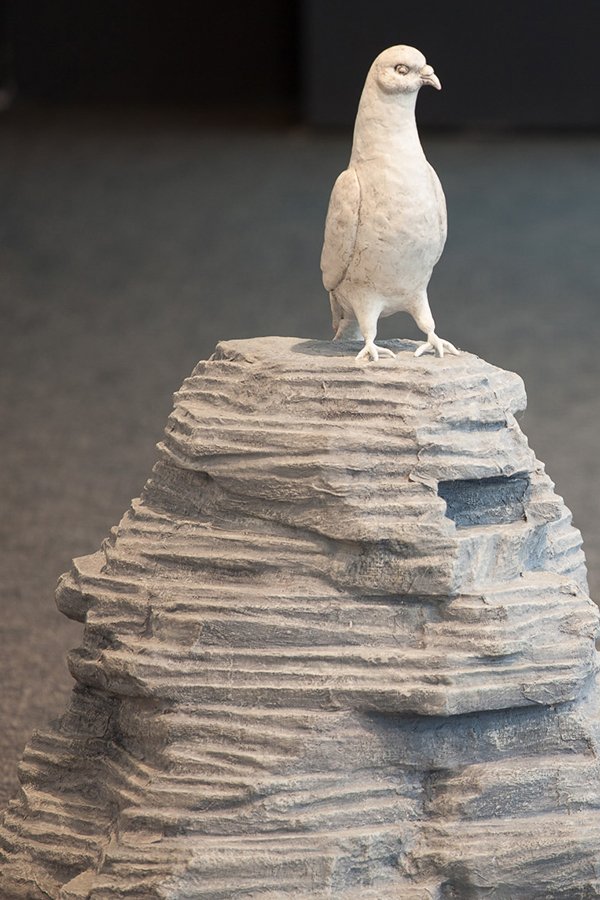
About Nikola Tesla
VISIONS AND DREAMSNikola Tesla was born on July 10, 1856, in what is now Smiljan, Croatia. He immigrated to the United States in 1884 to work for Thomas Edison, but soon after struck out on his own to set up laboratories in which he developed a range of electrical devices such as the AC induction motor and the Tesla coil, originally used in the development of the radio.
As interest in alternating-current systems grew, Tesla was put in competition with Thomas Edison, who was intent on selling his direct-current system. During this period Edison waged a “War of the Currents” campaign in an attempt to undermine interest in AC power.
Undeterred, in 1895 Tesla went on to create what was among the first AC hydroelectric power plants in the United States at Niagara Falls.The following year, it was used to power the city of Buffalo, New York; a feat that was highly publicized throughout the world. The AC system would quickly become the preeminent power system of the 20th century, and has remained the worldwide standard ever since.
Throughout his career Tesla was a pioneer in other discoveries such as radar technology, X-ray technology, remote control and the rotating magnetic field—the basis of most AC machinery.
He routinely conducted elaborate electrical demonstrations for the public that garnered him a reputation as an electrical wizard.
His boldest dream was to build a global, wireless communications system that would be transmitted through a large electrical tower for providing free electricity throughout the world.
As he aged his ideas became progressively more impractical. He grew increasingly solitary, devoting much of his time to the care of wild pigeons in New York City's Bryant Park.
Destitute and reclusive, Nikola Tesla died on January 7, 1943, at the age of 86, in New York City, where he had lived for nearly 60 years. But the legacy of his work has laid the foundation for the digital technology we use today.
